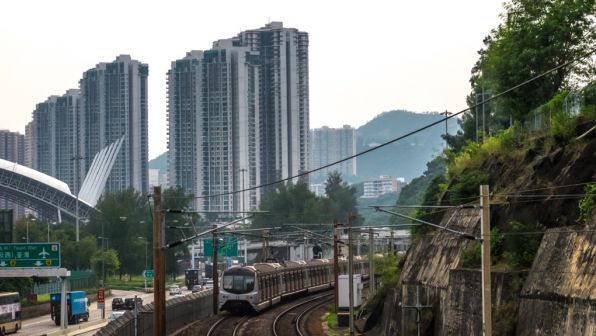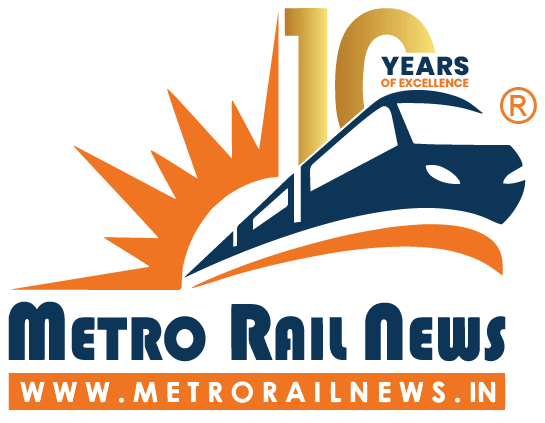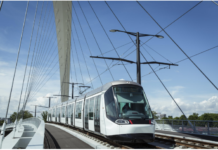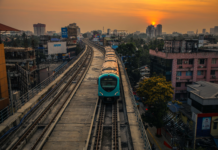Traditional Financing of our Urban Rail Projects
A good public transport system is often one of the defining features of a city, generating multiple far reached benefits, enhancing sustainable living, attracting residents, businesses, daily commuters, and tourists. Rail-based public transport projects such as LRTS/ MRTS/ RRTS generate large scale economic values for cities and are necessary for long term inclusive and sustainable development. However, in various transport systems across the world, fares that users pay do not fully help recover costs of the initial investment made. Substantial government monetary support, subsidies & loans are required to build, maintain and operate most of the rail-based transit systems. This traditional way of urban rail financing leads to a growing debt-subsidy cycle which undermines economic development.
At a time when urban rail investment appears to be a priority for the cities, governments face budgetary pressure leading to challenges in the financing of urban rail. The fiscal challenge for urban rail has prompted cities to find alternative funding and seek different governance frameworks to implement rail projects. Cities are recognizing the potential of urban rail in creating economic value, through its multiple non-transport benefits, especially its impact on land values and thus it’s potential to influence more intensive land development/ Transit Oriented Development (TOD) and hence urban regeneration with its associated agglomeration of benefits. Innovative financing through ‘beneficiary pay’ methods has emerged lately to cope up with the crunch of finances for building capital intensive public transport facilities such as Metro’s and Rapid Rails. Thus, it becomes essential for Indian cities to learn from the successful experiences of Innovative Financing for Mass Transit across the globe.
Impact of Rail Transit on Land & Real Estate Developments
The LRTS/ MRTS/ RRTS provides fast, reliable, safe and comfortable connectivity solution to the expanding urban centers. It serves as an integral commuter transport backbone in the region. High speed, a significant reduction in travel time and wider reach, offers very different propositions to the spatial geographies. The hypothesis is that even incremental changes in transport infrastructure may encourage both land development and economic growth stems from the concept of the “accessibility” of locations. The more easily people and goods can access a given location, the more desirable that location is for both people to live and for businesses to establish themselves. This added increment of location desirability will lead to tremendous development in public transport station areas/ influence zones ‐ both physical land development and redevelopment as well as economic development. With the establishment of MRTS corridors, there is a sharp increase in valuations, as per various market studies. The enhanced real estate development due to building an MRTS corridor brings in:
- Increase in catchment areas, due to which newer areas become accessible.
- Increase in real estate valuations, due to increased accessibility, infrastructure development and economic development.
- Transaction velocity increases with increase in number of real estate transactions. Till date. The rise in land & asset valuations due to public investments have usually been captured only by private players.
Understanding Land Value Capture (LVC)

Land Value Capture refers to a type of innovative public financing, in which increases in land values generated by a new public infrastructure investment are all or in part “captured” through a land-related tax or any other active or passive mechanisms, such as betterment charges, tax increment financing, air rights sale, property development, to pay back such an investment. In other words, Value Capture, in a broader sense, opposes the windfall gains derived out of public infrastructure creation accrued to a privileged few as unearned income but argues for redistribution of such gains fully or partially to fund public investment and also to compensate social-costs often resulting from these investment negativities. However, the LVC concept is still perceived as a work-in-progress with varied success. As evident from global experiences, this was primarily due to the fact that there is a notional misconception of the Value Capture mechanism as only a financing tool. Mostly they have overlooked the needed support investments for infrastructure integration and the sustainable community living aspects specifically in the case of using LVC for a mass transit project. Land Value Capture can be blended with the planning and development framework to bring in the realizations of Transit Oriented Development as well.
Development Based Land Value Capture (DBLVC): Development based Land Value Capture (DBLVC) is the type of LVC mechanism where transit agencies or transit investors are directly or indirectly involved in the delivery of development on land around transit stations (George Hazel Consultancy, 2013).
Examples: Direct Property Development, Joint Property Development, Land Sales/ Auction, Air Rights Sale, Land Lease Agreements, Land Readjustment, Urban Redevelopment Schemes
Taxation Based Land Value Capture (TBLVC): Taxation based land value capture (TBLVC) is the type of LVC instrument that is used to recover transit induced value gains by imposing taxes or fees on existing developments located in ‘transit investment benefitting areas” established by the transit agency. (Medda & Modelewska, 2009; Walters, 2012).
Examples: Cess, Taxes, Levies like
Tax Increment Financing (TIF), Special Assessments, Land Value Taxes (LVT),
Betterment Charges, Impact Fees, Station Connection Fees etc
Applicability of Land Value Capture Tools
Overall, Land Value Capture finance is rapidly acquiring global legitimacy as an ancillary and innovative source of funding for expensive urban transport projects. The highlighted economic impacts of public transit investments on surrounding properties make a strong case for transit Value Capture Finance in emerging cities. However, Development Based Land Value Capture type mechanisms have unique advantages over Taxation Based Land Value Capture type mechanisms and vice versa. It is critical that city leaders and transit executives consider the unique advantages of the two types of LVC to ascertain which best fits their local context and funding objective. Alternatively, DBLVC and TBLVC mechanisms can be consolidated to meet a funding objective, while leveraging the strengths of each type. Feasibility, Equity, Efficiency, and Revenue Capacity and their supporting criteria must be adhered to maximize the utility of any type of LVC mechanism for transit finance. Efficiency and Revenue Capacity especially underscore the essence of evaluating the revenues LVC mechanisms relative to their costs. This is a critical step towards thinking more economically about LVC finance tools used for financing transit and sustainable urban development.
The ‘Rail plus Property’ model: Hong Kong’s successful self-financing formula for MTR

‘Rail + Property’
model is one of the most successful examples of Development Based Land Value Capture
(DBLVC), which has been used for financing Mass Transit Railway
(MTR Hong Kong). The reason behind the model being able to perform so
well is that the government of Hong Kong has enabled MTR to capture value from
the property-value increases that typically follow the construction of rail
lines. The key is a business model called “Rail plus Property” (R+P). For new
rail lines, the government provides MTR with land “development rights” at
stations or depots along the route. To convert these development rights to land, MTR pays the government a land premium
based on the land’s market
value without the railway. Similar models have been developed
for Shenzhen, China, Sydney & London.





